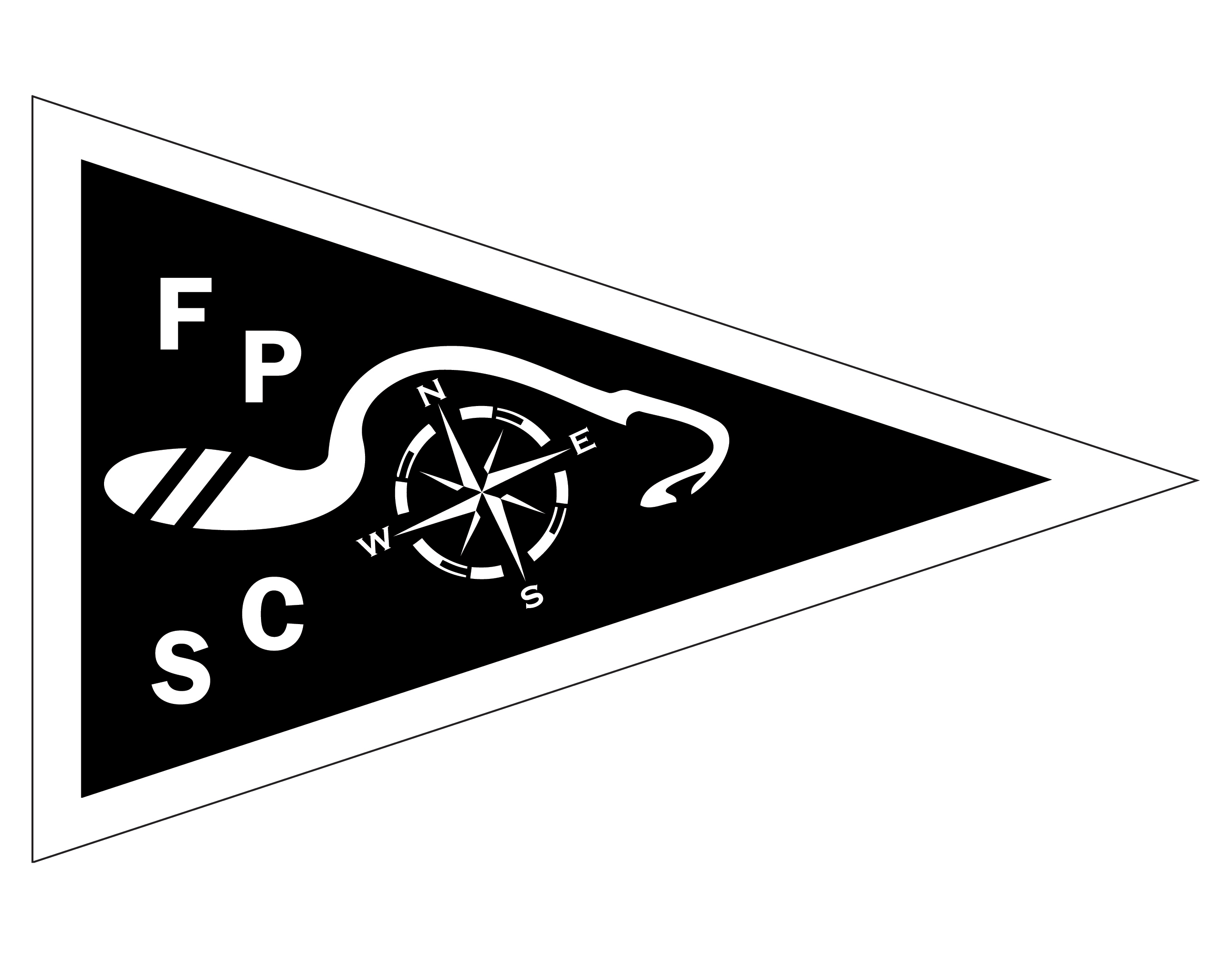by Garry Cooke
(Original article published in the FPYC August Scuttlebutt)
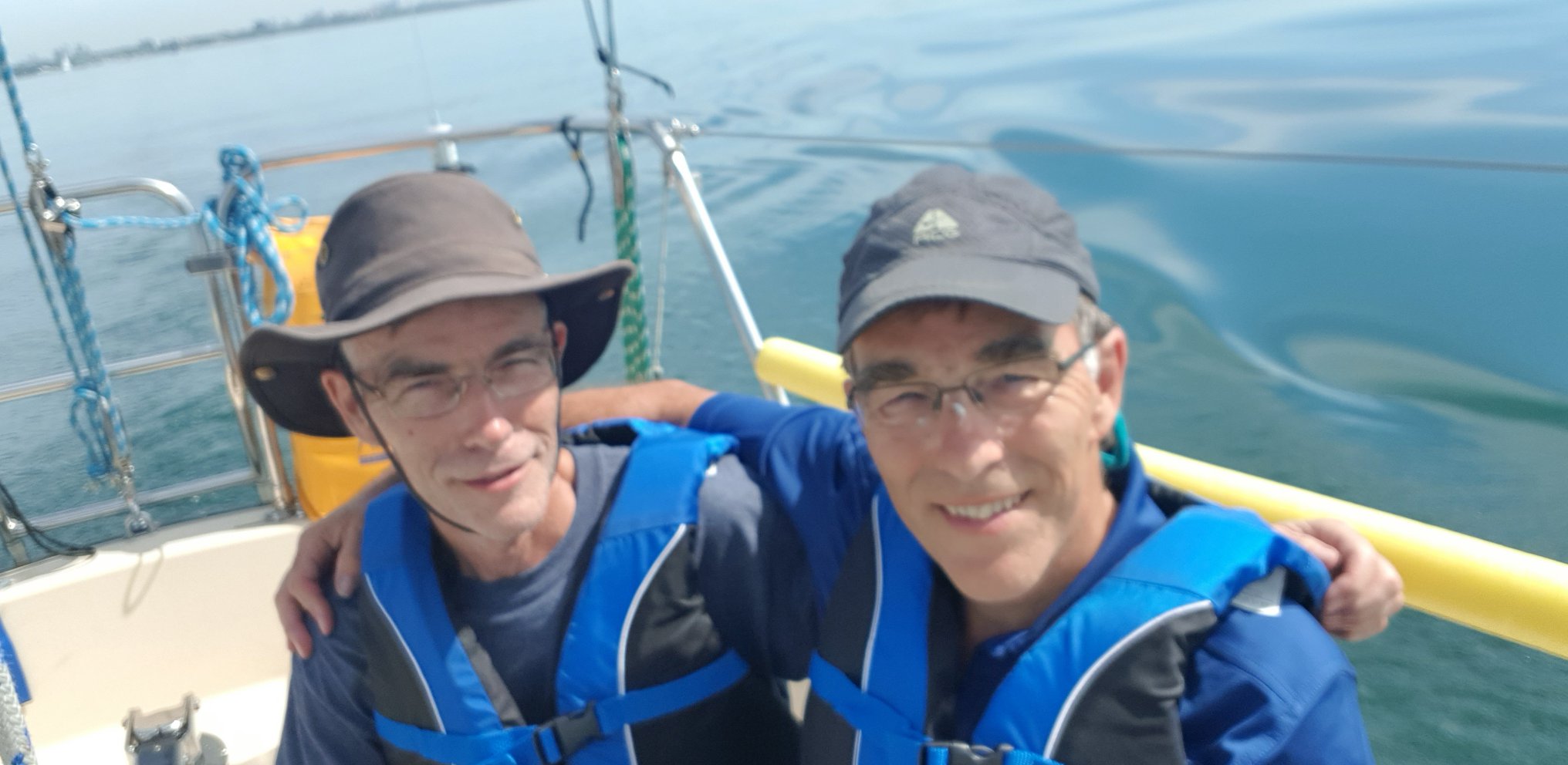 The Cooke BrothersThe annual Ontario 300 race is one of the biggest on the Lake, with typically about 100 entries. This year there were 85 boats registered for the two courses; the ‘Main Duck’ long course, and the ‘Scotch bonnet’ short course. The long course is about 300 nautical miles and the short course is about 200 nm. Two boats in the marina participated in the Ontario 300 this year. Randy St.Jacques on ‘Scrubs’ sailed in the fully crewed division of the ‘Main Duck Course’. Myself (Garry Cooke) and my twin brother Peter sailed in the double handed ‘Scotch Bonnet’ course on ‘Eclipse’.
The Cooke BrothersThe annual Ontario 300 race is one of the biggest on the Lake, with typically about 100 entries. This year there were 85 boats registered for the two courses; the ‘Main Duck’ long course, and the ‘Scotch bonnet’ short course. The long course is about 300 nautical miles and the short course is about 200 nm. Two boats in the marina participated in the Ontario 300 this year. Randy St.Jacques on ‘Scrubs’ sailed in the fully crewed division of the ‘Main Duck Course’. Myself (Garry Cooke) and my twin brother Peter sailed in the double handed ‘Scotch Bonnet’ course on ‘Eclipse’.
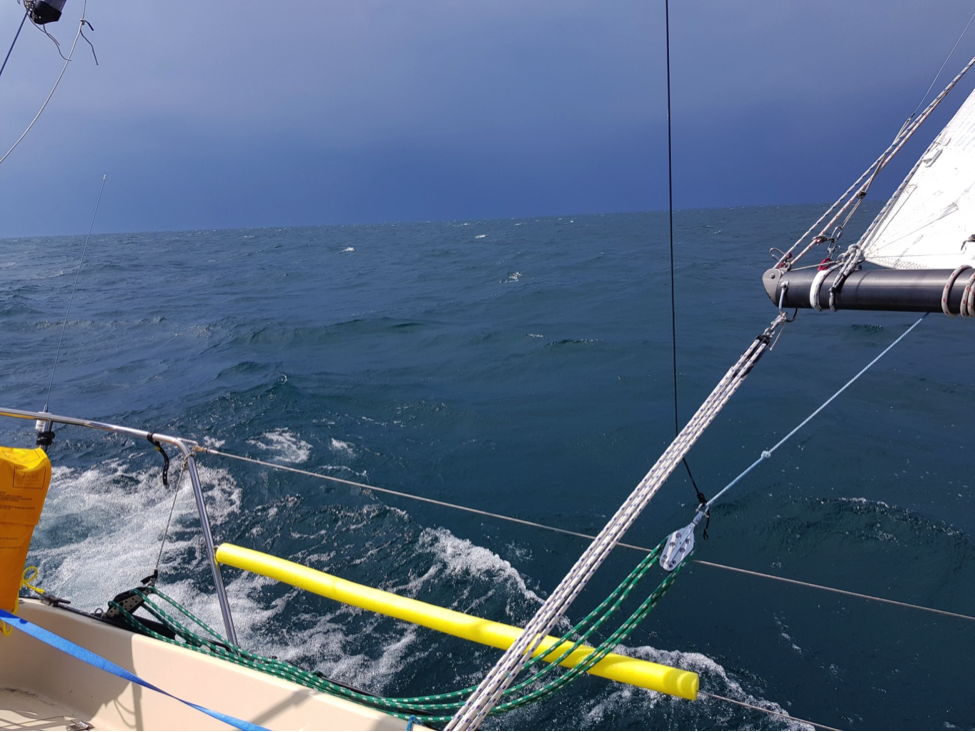 Storms on the courseThe wind this year was generally better than last year, and we sailed most of the way to Scotch Bonnet with the boat on a broad reach, which allowed us to make great speed down the Lake. We encountered three thunderstorms one after the other, and we were doing about 9-10 knots with bursts up to 11.5 knots with just the main and jib! The wind kept us going most of the way to Scotch bonnet and most of the way back to Niagara. Because of the wind on a broad reach, we were able to pull away from the pack, and maintained 2nd position all the way around until the dead air patch in Niagara, where the 3rd place boat managed to get past us. The wind shifted more on the nose and became lighter until it died out completely at the Niagara turning mark. We sat for a couple hours trying to coax the boat along. At one point we were going sideways at about 0.4 knots according to the GPS, when the knot meter read zero, which was likely the current from the river pushing us further out into the Lake.
Storms on the courseThe wind this year was generally better than last year, and we sailed most of the way to Scotch Bonnet with the boat on a broad reach, which allowed us to make great speed down the Lake. We encountered three thunderstorms one after the other, and we were doing about 9-10 knots with bursts up to 11.5 knots with just the main and jib! The wind kept us going most of the way to Scotch bonnet and most of the way back to Niagara. Because of the wind on a broad reach, we were able to pull away from the pack, and maintained 2nd position all the way around until the dead air patch in Niagara, where the 3rd place boat managed to get past us. The wind shifted more on the nose and became lighter until it died out completely at the Niagara turning mark. We sat for a couple hours trying to coax the boat along. At one point we were going sideways at about 0.4 knots according to the GPS, when the knot meter read zero, which was likely the current from the river pushing us further out into the Lake.
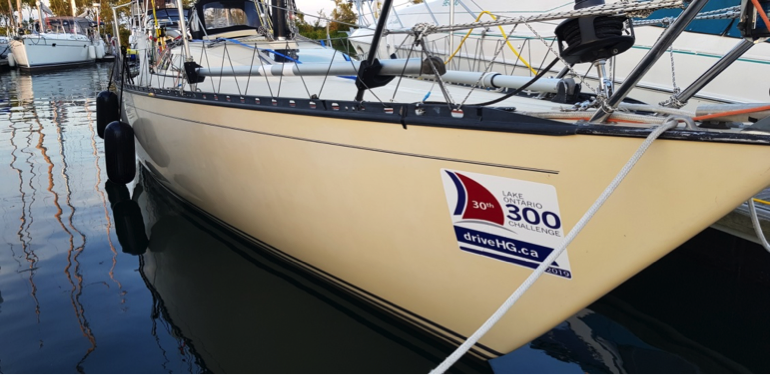 Eclipse at PCYCWe managed to pick up some wind going back to Port Credit, and sailed at hull speed for most of the way across, but again encountered light air at the finish, where we sat and looked at the finish mark for over an hour, fighting to stay ahead of the gradually gaining boat behind us. We crept over the finish line, tacking twice to defend our position from the boat behind us.
Eclipse at PCYCWe managed to pick up some wind going back to Port Credit, and sailed at hull speed for most of the way across, but again encountered light air at the finish, where we sat and looked at the finish mark for over an hour, fighting to stay ahead of the gradually gaining boat behind us. We crept over the finish line, tacking twice to defend our position from the boat behind us.
![]() Yellow Brick trackerWe were still happy with our performance though, achieving 1st place in the double handed division (NFS) and 3rd overall line honours. My brother was especially thrilled, since he is new to sailing and came over from the UK for the race (and to celebrate our Dad’s 90th birthday of course!).
Yellow Brick trackerWe were still happy with our performance though, achieving 1st place in the double handed division (NFS) and 3rd overall line honours. My brother was especially thrilled, since he is new to sailing and came over from the UK for the race (and to celebrate our Dad’s 90th birthday of course!).
The race had one unfortunate mishap; fortunately with no injuries. A multi-hull got flipped in the 33 knot winds. USCG rescued the three crew members and placed flashing lights on the upturned hull as a navigation warning until the wreck could be towed.
The race is exceedingly well organized, and my thanks go out to the hard working volunteers at PCYC who put the race on. The race committee plan the event during the year prior to the race. There are also many safety requirements imposed and there is GPS tracking that shows the position of all boats on the course. (ybtracker.com).
As can be seen from the track we had good winds going and most of the way back. The lack of wind and 30 deg knocks at the finish are also evident from the track. Not so clear are the several hours spent becalmed at Niagara!
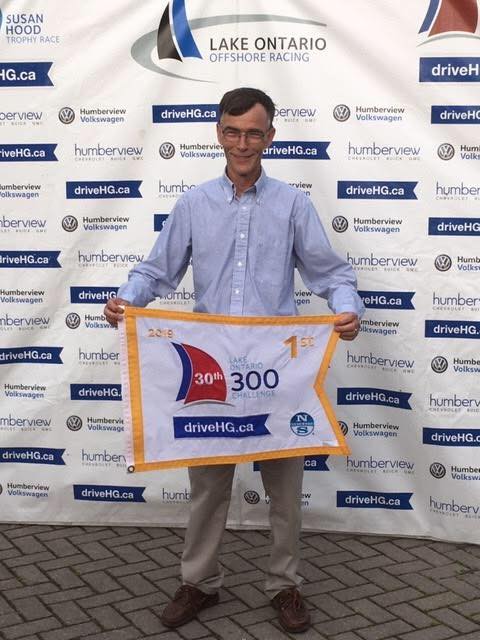 Congratulations Garry!
Congratulations Garry!
It is a good race, and for those that cannot afford the time for the long course, the short course is still a great race and a great challenge. We took 1 day and 20 hours to complete the short course, while the long course took boats approximately a day longer.
I would encourage members to try and promote interest in the short course racing under white sails to see if we can have a larger group represent our club at the event next year.
